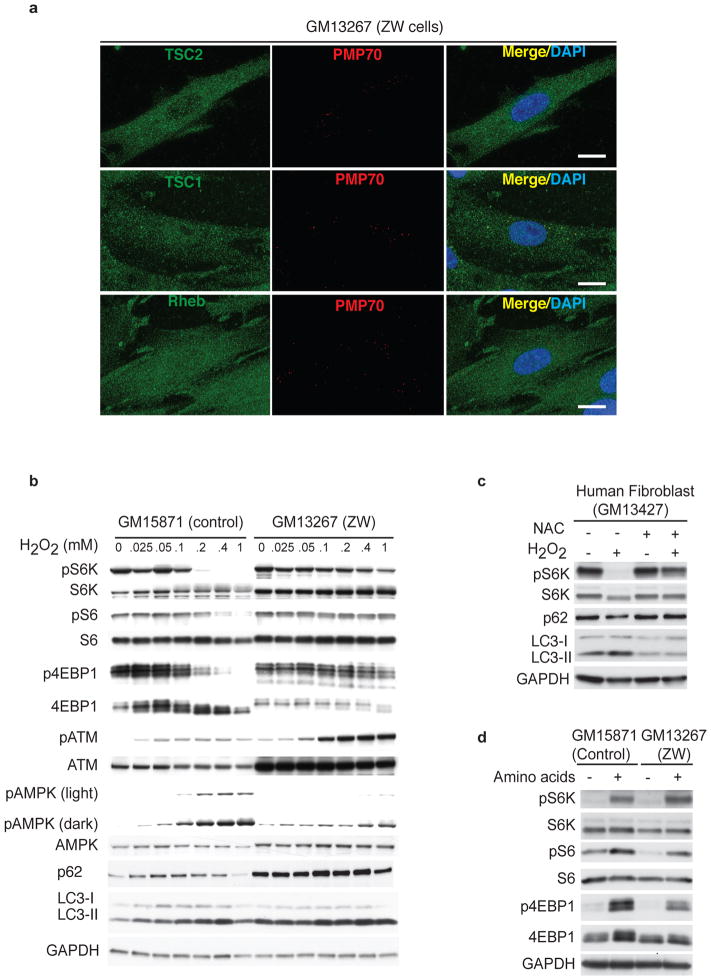Figure 5.
TSC’s ability to suppress mTORC1 is abrogated in peroxisome-deficient Zellweger cells. (a) Representative images of Zellweger cells (GM13267) showing endogenous TSC2, TSC1 and Rheb (green) co-localization with PMP70 (red). (Scale bar - 15μm). (b) Western analysis of human fibroblasts obtained from Zellweger (GM13267) or corresponding control patient with [Ehlers-Danlos syndrome (GM15871)] treated with indicated doses of H2O2 for 1hr. mTORC1 signaling was assessed by western analysis for pS6K (T389), S6K, pS6 (S235/236), S6, p4EBP1 (T37/46), 4EBP1, pATM (S1981), ATM, pAMPK (T172), AMPK, p62 and LC3. (c) Western analysis of human fibroblast (GM13427) cells pre-incubated with 3 mM NAC (ROS scavenger) for 1hr before treated with 0.4 mM H2O2 for 1hr using anti-pS6K (T389), S6K, p62 and LC3 antibodies. (d) Representative western analysis using cell extracts from human fibroblasts obtained from a Zellweger patient (GM13267) or control fibroblasts (GM15871) treated with amino acid free media for 60 min, and stimulated with mixture of amino acid for 10 min. mTOR signaling was monitored using anti-pS6K (T389), S6K, pS6 (S235/236), S6, p4EBP1(T37/46), and 4EBP1 antibodies. Uncropped images of western blots are shown in Supplementary Fig. S6.

